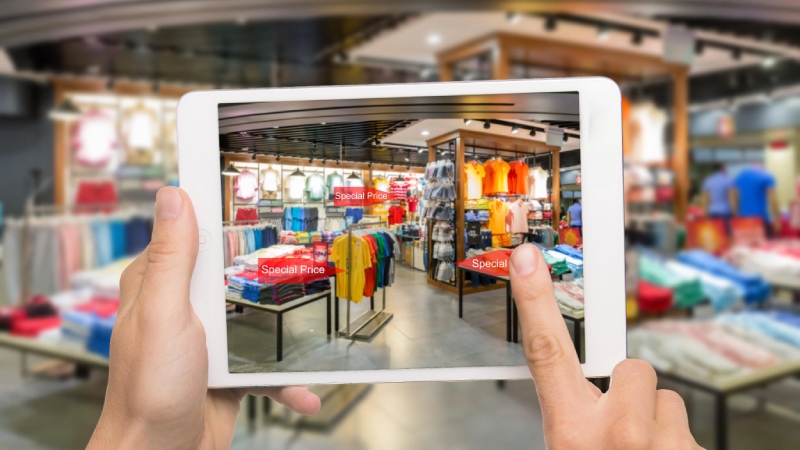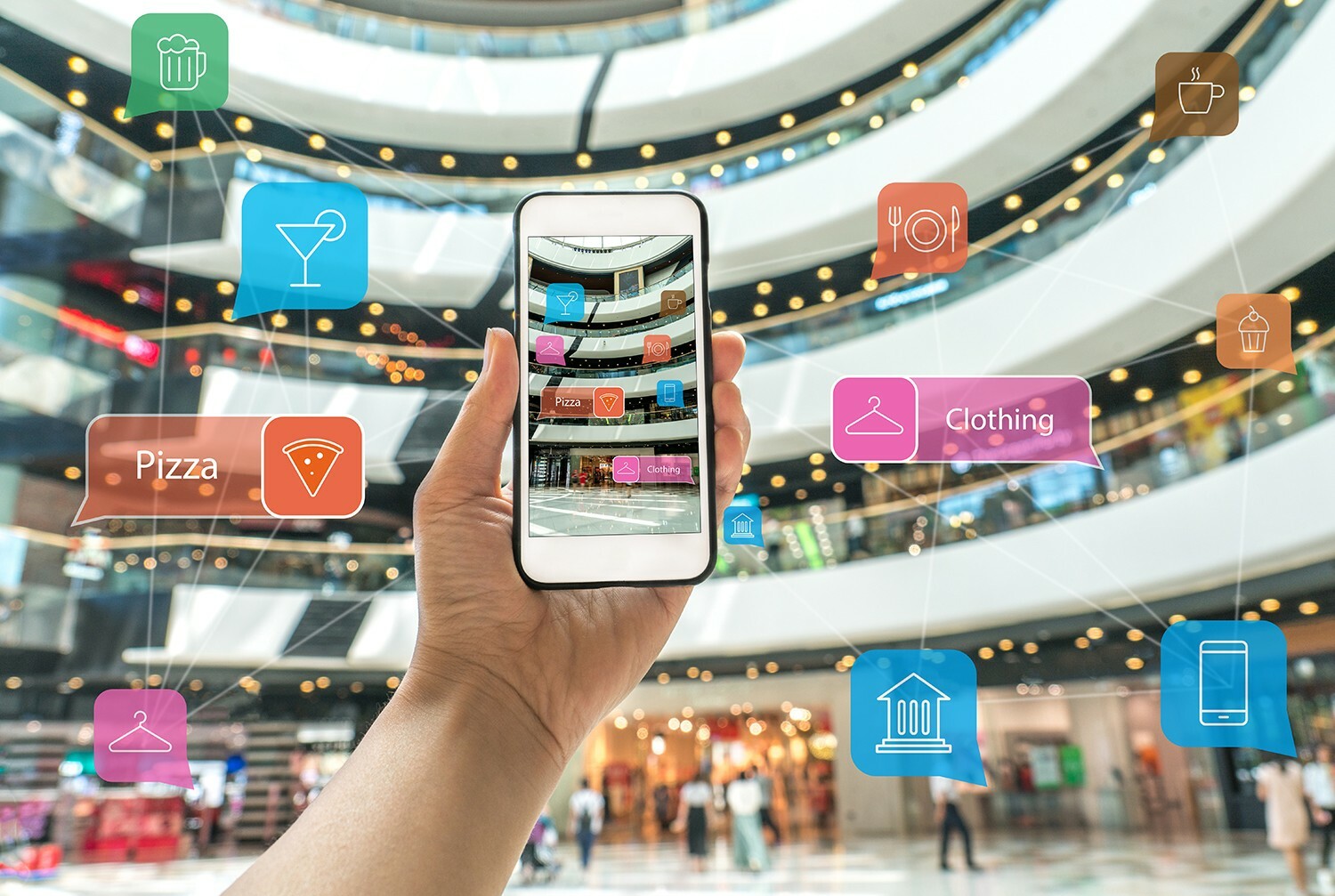Step Inside the Story- How AR and VR Are Redefining Modern Marketing?

Have you ever wondered how to craft marketing campaigns that not only capture attention but also linger in your audience’s memory? In today’s hypercompetitive digital world, earning—and keeping—consumer attention has never been more difficult. That’s where Virtual Reality (VR) and Augmented Reality (AR) come in—transformative technologies that enable brands to design immersive, interactive experiences far beyond the limits of traditional advertising.
Let’s explore how these tools can elevate your marketing strategy and turn every campaign into an unforgettable brand experience.
Beyond the Buzzword: Real-World Applications of VR and AR in Marketing
Virtual and augmented reality are no longer futuristic novelties. They’ve evolved into powerful, accessible tools that help marketers deliver deeply engaging, personalized experiences. Below are some of the most effective, practical ways to integrate these technologies into your campaigns—from virtual product trials to fully immersive brand storytelling.
1. “Try Before You Buy”: Augmented Reality Product Experiences
Imagine giving clients the power to try your product without ever leaving their home. That’s precisely what AR makes possible. Using a smartphone camera, users can scan their surroundings and overlay virtual versions of products—from furniture to beauty items—directly into their real-world environment.
This interactive experience not only boosts client confidence but also significantly reduces product return rates.
2. Immersive Storytelling: Bringing Brands to Life Through VR
The most powerful way to sell a product is to sell the story behind it—and VR excels at storytelling. It’s an unmatched tool for brands aiming to convey powerful messages or unique experiences.
From allowing travelers to explore a destination in 360° to enabling clients to take a virtual test drive from home, VR lets brands craft emotional, memorable experiences that resonate long after the campaign ends. The result? A powerful connection that transforms casual consumers into loyal advocates.
3. Experiential Marketing: Creating Unique In-Store or Event Experiences
Cutting-edge campaigns that use VR and AR in stores or events can attract crowds and spark genuine excitement.
Here are some real-world examples:
- Interactive mirrors in clothing stores that let shoppers “try on” outfits without changing their clothes.
- Virtual walkthroughs of yet-to-be-built real estate projects allow clients to explore their future homes.
In 2017, Houzz launched an AR feature that allowed users to “place” furniture items in their rooms via mobile. Users who interacted with this tool were 11 times more likely to make a purchase and spent 2.7 times longer in the app.
These figures highlight that AR and VR are not just entertaining add-ons—they’re strategic tools for driving growth.
"VR and AR are not futuristic gimmicks—they’re practical, results-oriented marketing assets. AR enables clients to test products virtually, while VR builds emotional depth through immersive storytelling, strengthening brand connection and loyalty."

How to Begin Integrating AR into Your Marketing Strategy?
Understanding the potential of AR and VR is one thing—integrating them effectively is another. Successful implementation requires strategy, purpose, and precision, not just trend-chasing.
Here are 3 key steps to get started:
1. Define Your Goal — What Do You Want to Achieve with AR?
Every great campaign begins with a clear purpose. Decide whether your primary goal is to:
- Increase sales.
- Enhance client experience.
- Build brand awareness.
If your focus is on conversion, consider creating an AR feature that helps clients visualize products in their own environment. If you’re aiming for brand engagement, develop interactive experiences or social filters that drive shareability and buzz.
2. Choose the Right Platform and Tools — Custom-Built or Ready-to-Use?
Developing a custom AR app offers full creative control, but it demands a significant investment. Alternatively, ready-made tools let you test ideas quickly and affordably.
Retailers with limited budgets can benefit from these cost-effective AR solutions by using simple and accessible platforms.
For example, you can create engaging Instagram filters using Spark AR or develop interactive campaigns with Google’s AR tools.
This approach allows you to test your idea, gather feedback, and measure audience engagement before committing to a more complex long-term solution.
3. Create Compelling AR Content
The strength of an AR experience lies not in the technology itself but in the quality of its content. Ensure that every element—visuals, animations, and interactivity—feels natural, relevant, and aligned with your brand identity.
Successful AR content often includes:
- Realistic 3D product models.
- Smooth, intuitive animations.
- Immersive storytelling elements.
High-quality, well-crafted content ensures a seamless and convincing user experience. Every detail matters when it comes to the success of your campaign.
"To start integrating AR, first define your marketing objective. Then, choose the right platform—whether it’s a built-in app feature, social media filter, or web-based experience. Finally, create high-quality interactive content using accessible tools like Google ARCore or Adobe Aero, even without deep programming knowledge.

Is AR and VR the Right Fit for Your Brand?
Before investing heavily, it’s crucial to assess whether AR and VR truly align with your brand identity, target audience, and strategic goals. These technologies are most impactful in industries where visual engagement drives decision-making.
1. Best-Fit Industries: Where AR and VR Deliver Maximum Impact
AR and VR marketing deliver the greatest impact in industries that rely heavily on visual and sensory experiences. Instead of discussing each sector separately, here’s a summary of their main advantages:
|
Industry |
AR/VR Benefits |
|
Fashion |
Enables virtual try-ons and enhances purchase confidence. |
|
Furniture |
Lets clients visualize products in their homes. |
|
Real Estate & Tourism |
Offers immersive virtual tours and previews. |
|
Automotive |
Provides virtual test drives and feature exploration. |
2. Evaluation Factors: Budget, Target Audience, and Product Type
Choosing the right technology depends on several key considerations:
- Budget: AR/VR solutions vary in cost. Start with low-cost platforms for early testing, then scale up as the results justify the investment.
- Target Audience: Choose technologies that align with your audience’s digital habits. For example, if your clients are active on Instagram or Snapchat, AR filters may be the most effective entry point.
- Product Type: Complex, visually driven products—like home décor, fashion, or beauty—benefit most from immersive visualization.
3. AR vs. VR: When to Choose Each
While both technologies enhance brand engagement, they serve distinct purposes:
- Augmented Reality (AR): Ideal for experiences that blend the digital and physical worlds—like virtually trying products in real-world environments. AR typically requires only a smartphone or tablet.
- Virtual Reality (VR): Designed for fully immersive experiences in a separate virtual environment, usually requiring specialized headsets.
Global examples illustrate how the right technology depends on context:
- In retail, AR boosted conversion rates by 94% on average (Shopify), while Houzz users engaging with AR were 11x more likely to purchase.
- In real estate and tourism, VR experiences delivered measurable impact: 14% faster property sales (Zillow) and 190% higher booking rates (Thomas Cook).
- Hospitality literature in 2024 confirms that AR/VR enhances booking intention. Reports from PwC and McKinsey highlight that AR/VR are now integral to the future of marketing and hospitality experiences.
This doesn’t mean VR isn’t suitable for retail—but AR offers a simpler, more accessible gateway for mass audiences.
"To determine whether AR or VR fits your brand, evaluate your audience and budget. AR works best for visually testable products, such as clothing or jewelry, while VR excels at creating immersive experiences for services like travel or real estate."
_ILLAFTrain_43c9ed61c418ff384e7d942acbdbafb9b7d371c7_891c6e5790518c809c7f1eab57603636.jpg)
The Flip Side: Challenges and Risks
Despite their enormous potential, implementing AR and VR in marketing isn’t without obstacles. Brands must be aware of the following challenges before diving in:
1. High Costs: Development and Maintenance
Cost remains one of the biggest hurdles—especially for small and mid-sized businesses. Beyond the initial development investment, brands must account for:
- Ongoing maintenance and updates to ensure smooth performance.
- Frequent upgrades to align with rapid technological advances.
Without a well-planned budget and ROI analysis, these costs can easily outweigh potential returns.
2. Technical Barriers: Device Compatibility and Performance Gaps
AR and VR campaigns demand devices with specific hardware and software capabilities. Limited compatibility or inconsistent performance can disrupt the user experience and, in turn, damage brand perception.
According to Google’s developer documentation, hardware fragmentation—the wide variety of device types and specifications—significantly increases both development time and cost. To mitigate these risks, marketers must identify supported devices and plan compatibility strategies early in the process.
3. The Risk of Poor Execution: When Innovation Misses the Mark
The presence of AR or VR doesn’t guarantee engagement. A poorly executed experience—one that feels clunky, slow, or lacking in substance—can do more harm than good.
Audiences quickly notice when a brand prioritizes novelty over value. If the experience feels gimmicky or irrelevant, it can erode trust and credibility rather than enhance it.
In essence, a weak AR or VR experience can backfire—diminishing brand equity instead of elevating it.
"While AR and VR unlock powerful new possibilities, they also present real challenges—from high production costs to compatibility issues and the risk of uninspired execution. Poorly designed experiences can undermine a brand’s image rather than strengthen it."
FAQ
1. Can small businesses benefit from AR?
Absolutely. Small businesses can use free or low-cost AR tools—like Instagram or Snapchat filters—or collaborate with specialized agencies that offer scalable, budget-friendly solutions.
2. What are the main platforms supporting AR in marketing?
Key platforms include Instagram (AR filters), Facebook, Google (which enables 3D product visualization in search results), and Shopify, which integrates AR directly into online storefronts.
3. Should I invest in VR or AR?
It depends on your goals. AR is more accessible and ideal for “try-before-you-buy” experiences, while VR is perfect for immersive, high-impact storytelling—especially for brands selling experiences rather than physical products.
From Communication to Immersion
The integration of AR and VR represents more than a technological evolution—it’s a paradigm shift in marketing philosophy. Brands are moving from merely communicating messages to creating experiences that resonate on an emotional level.
When implemented strategically, these tools can deliver a distinct competitive edge, forging deeper, more memorable connections with clients.
However, success requires balance: creativity must be matched with careful planning, technical foresight, and an understanding of the potential pitfalls.
The future of marketing isn’t just about what you sell—it’s about how deeply your audience experiences your story.
Are you ready to redefine the boundaries of your marketing strategy?
Join the conversation: How do you envision AR and VR reshaping the marketing landscape?
This article was prepared by coach Hassan Al-Khatib, a coach certified by Goviral